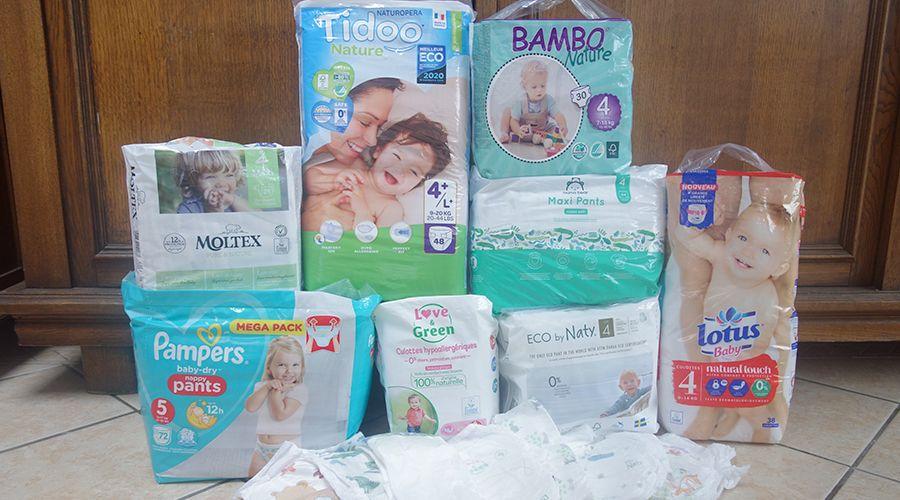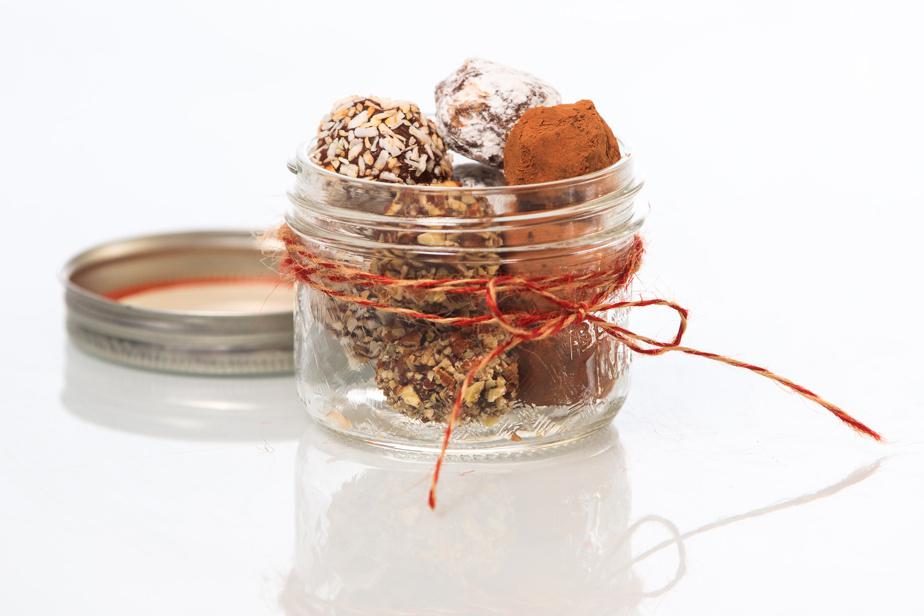Baby Diapers: Better Product Quality
The DGCCRF notes an improvement in the quality of baby diapers
[Update of February 25 at 12:56 p.m.]. "After the large-scale survey carried out in 2019 and early 2020 on 32 references of baby diapers, an additional survey carried out at the end of 2020 made it possible to confirm the absence of exceeding the health thresholds and the continuation of the improvement of the quality of the 9 references sampled which had to be the subject of a particular follow-up with regard to the previous results" specifies the General Directorate for Competition, Consumer Affairs and Fraud Prevention (DGCCRF) in a press release of February 23, 2021. Here are the new conclusions:
What are the 9 diaper references tested?
The best nappies (in the green):
Their result is less than 10% of the health thresholds calculated by ANSES: the substance was not detected or was detected in small quantities. It is therefore not likely to present a risk, including in the context of cumulative exposures.
Diapers and formaldehyde, in the gray
The DGCCRF notes "a result for which it is not possible to exclude an overrun of the value corresponding to 10% of the health thresholds calculated by the Anses, the fact that the substance was detected, but at an insufficient concentration to be quantified or of a variability of the results not making it possible to conclude. Significant margins remain compared to the health thresholds"
Diapers and formaldehyde, in yellow
The result is between 10% and 25% of the health thresholds calculated by ANSES. The substance is present in a quantity which does not lead to the exposure threshold being exceeded due to the diapers alone, but which does not make it possible to guarantee the absence of risks within the framework of the cumulative exposures.
Diapers and formaldehyde, in orange
The result is between 25% and 50% of the health thresholds calculated by ANSES. The substance is present in a quantity which does not lead to an overrun of the exposure threshold due to diapers only, but which does not make it possible to guarantee the absence of risks within the framework of the cumulative exposures.
In July 2020, the DGCCRF analyzed the composition of 32 diaper models sold in France. The results were already encouraging: the composition of the diapers is much better than before since the government's warning to diaper manufacturers in January 2019. None of the diapers contains toxic substances (pesticides, allergens, phthalates, dioxins, hydrocarbons , furans, etc. above the thresholds recommended by the National Agency for Food, Environmental and Occupational Health and Safety (ANSES). No allergens or pesticide residues were found in the 32 diaper models analyzed, and 5 references were completely in the green for eight families of chemical substances: Pampers Harmonie, Joone, Eco by Naty, Bambo Nature and Huggies little swimmer ( aquatic layers).
Disposable diapers: no more chemical substances in Europe?
In an opinion published on December 22, 2020, the National Agency for Food, Environmental and Occupational Health Safety (Anses ) proposes, within the framework of the European regulation of chemical products REACH, to restrict to the whole European Union the chemical substances of disposable nappies intended for babies from 0 to 3 years old. This proposal "consists of limiting as much as possible the presence in these articles of nearly 200 substances including polycyclic aromatic hydrocarbons (PAHs), dioxins, furans, PCBs and formaldehyde", specifies ANSES. It therefore sets threshold concentrations not to be exceeded and proposes to apply "a layer analysis method which must be harmonized at European level to search for these substances". Finally, to limit contamination of diapers, ANSES proposes to strengthen the control of raw materials and manufacturing processes. It therefore recommends "carrying out additional tests to check that the raw materials are not already contaminated before manufacturing, controlling the temperature during heating to avoid the appearance of PAHs, controlling the bleaching processes, and removing certain dyes".
As a reminder, in January 2020, i.e. one year after its report pointing out the health risks linked to the presence of chemical substances in baby diapers and to better protect the health of infants, ANSES was already proposing a restriction of substances chemicals in disposable diapers. The objective: to prohibit or limit the presence of polycyclic aromatic hydrocarbons (PAH), dioxins, furans, PCBs and formaldehyde in diapers. Also, to avoid the risks of exposure to these chemical substances, the Agency recommended that manufacturers "eliminate the use of all fragrances, in priority those likely to have skin sensitizing effects", to "better control the origin natural raw materials that can be contaminated even before manufacturing, and finally, to improve diaper manufacturing processes.
Which diapers are the least toxic for babies?

Since the new restrictions concerning the composition of disposable diapers, brands have understood it well: the time has come for healthy, eco-friendly diapers, with products of natural origin.
The safest disposable diapers according to 60 million consumers
In its October 2020 issue, 60 Million consumers published a ranking of baby diapers. The consumer association included the brands Pampers Harmonie, the Marque Repère Mots d'enfants by E.Leclerc Nature, and Love&Green. Love & Green and Lillydoo as well as Mots d'Enfants are among the top 3 best rated diapers for both performance and composition. In its previous ranking of the best baby diapers, 60 million consumers rated Joone Protection Premium brands as the safest for babies' bottoms. Indeed, they contain no trace of toxic residues. On the other hand, their price is relatively high: 64.90 euros for 162 diapers. They are followed by the Pampers Premium Protection brands, Pampers Baby Dry in third position and Carrefour Baby.
| Ranking | Brand |
| 1st | Love & Green |
| 2nd | Lillydoo |
| 3rd | Children's Words Brand Mark |
| 4th | Pampers Baby Dry |
| 5th | Carrefour Baby (ultra Dry) |
| 6th | Pampers Harmony |
| 7th | Auchan Baby |
| 8th | Lipilu Soft & Dry |
The safest disposable diapers according to UFC-Que Choisir
UFC-Que Choisir had already evaluated the quantity of undesirable substances - among them glyphosate, PAH hydrocarbons (derived from petroleum) and 26 allergens listed by the European Union - in a selection of 12 baby nappies. Here are the models that contain the least. To read the test in its entirety and have more information, click here.
| Ranking | Brand |
| 1st | Lotus Baby Touch |
| 2nd | Agility Dry cheekbone (Intermarché) |
| 3rd | Lupilu Soft & Dry (Lidl) |
| 4th | Naty Eco by Naty |
| 5th | < td>Pampers Baby Dry
Toxic diapers: what are the risks for the baby?
A total of 23 diaper references for babies for sale on the French market were analyzed between 2016 and 2018. babies. Some of these substances are intentionally added, such as fragrances that can cause skin allergies. Other identified substances may come from contaminated raw materials or manufacturing processes (DL-PCBs, furans and dioxins, PAHs)" , specifies the Agency.
As a reminder, the National Health Security Agency had noted health thresholds being exceeded for several chemical substances. "These are fragrant substances (butylphenyl methyl propional or lilial®, hydroxyisohexyl 3-cyclohexene carboxaldehyde or lyral®), certain polycyclic aromatic hydrocarbons (PAHs), PCB-126, the sum of PCB-DLs and the sum of dioxins , furans, and DL-PCBs,” the report stated. Nearly five months after this controversy, families and an association seized the Council of State in order to know the name of these 23 brands in question. "The Ministries of Economy, Health and Ecological Transition did not respond to our letter sent two months ago, which amounts to a refusal", explains to the newspaper Le Parisien Quentin Guillemain, one parents. "We are therefore taking the case to court to request the list of brands but also the removal of dangerous diapers as well as better information from parents. There is a health emergency," he said. Remember that previous surveys by 60 Millions de consommateurs and UFC-Que Choisir had also highlighted the presence of chemical substances in certain brands of baby diapers, by establishing a classification of products.
How did the diaper manufacturers get involved?
Two weeks after the publication of the ANSES report revealing the presence of toxic substances in the 23 brands of diapers (tested anonymously) , the manufacturers were received on February 8, 2019 by the General Directorate for Competition, Consumer Affairs and Fraud Prevention (DGCCRF). Producers were invited to give their opinion on the measures to be implemented to ensure more safety for newborns. In particular, they must commit to:
- The elimination of allergenic substances, particularly in perfumes, within a maximum period of three months.
- Within 5 months, manufacturers will have to analyze the supply and manufacturing circuits in order to identify and eliminate the sources of contamination.
- the eradication of the presence of chlorine, carcinogenic VOCs, dioxins and glyphosate.
- Better inform consumers. Diaper manufacturers must show the composition of the products on the packaging within a maximum period of 6 months, give a date for setting up information for customers concerning the components and the places of manufacture of their products, as well as an end date for the use of perfumes and lotions.
The DGCCRF should soon set up a new phase of control to assess compliance with and effectiveness of commitments by professionals in the sector.
Which disposable diapers to choose?
Remember that 60 Million consumers and UFC-Que Choisir looked last year at the composition of baby diapers. Overall, the results of these two surveys are encouraging: "the number of diapers containing no trace is greater than in 2017", specified 60 Millions de consommateurs in its September 2018 issue. And to highlight the efforts of certain brands of nappies: reduction of petrochemicals, sustainable development approach, more transparency on labels... In its October 2018 issue, UFC-Que Choisir also wishes to reassure parents: "in all analyzes on nappies having been published, the residues were found at trace levels, therefore without short-term toxic risk for the baby and with probabilities of risk, a priori quite low in the longer term". Note that the brands of baby diapers that claim to be "ecological" are not necessarily devoid of toxic substances, agree in saying the two magazines. So which ones to choose?
A reduction in VAT on eco-friendly diapers?
Three manufacturers of baby diapers, belonging to the Naturopera group, are launching a petition to ask the government to reduce VAT to 5.5% on eco diapers. Indeed, the organic brands Tidoo, Libellys, and Carryboo, sold in organic distribution networks, in pharmacies or in supermarkets, recall that it is a product "of first necessity", and wish that these nappies are accessible to as many parents as possible. Geoffroy Blondel de Joigny, one of the two founders of organic diaper brands, reminds Le Parisien that the VAT on hygienic protection rose to 5.5% in 2016. "As parents, it's hard to ignore on the purchase of diapers, i.e. around 4,200 until the baby is three years old for a budget of around 2,000 euros", he specifies. While the government must present the results of its investigation into the potential risks linked to the toxic substances present in baby diapers, this petition in favor of organic diapers could delight many parents since this reduction in VAT would be passed on to the price of consumer sale.








